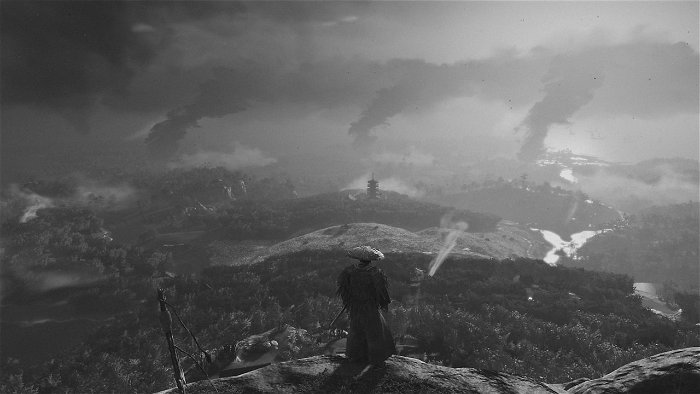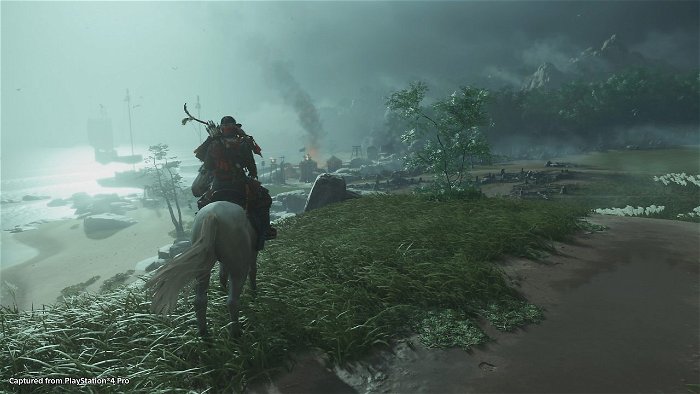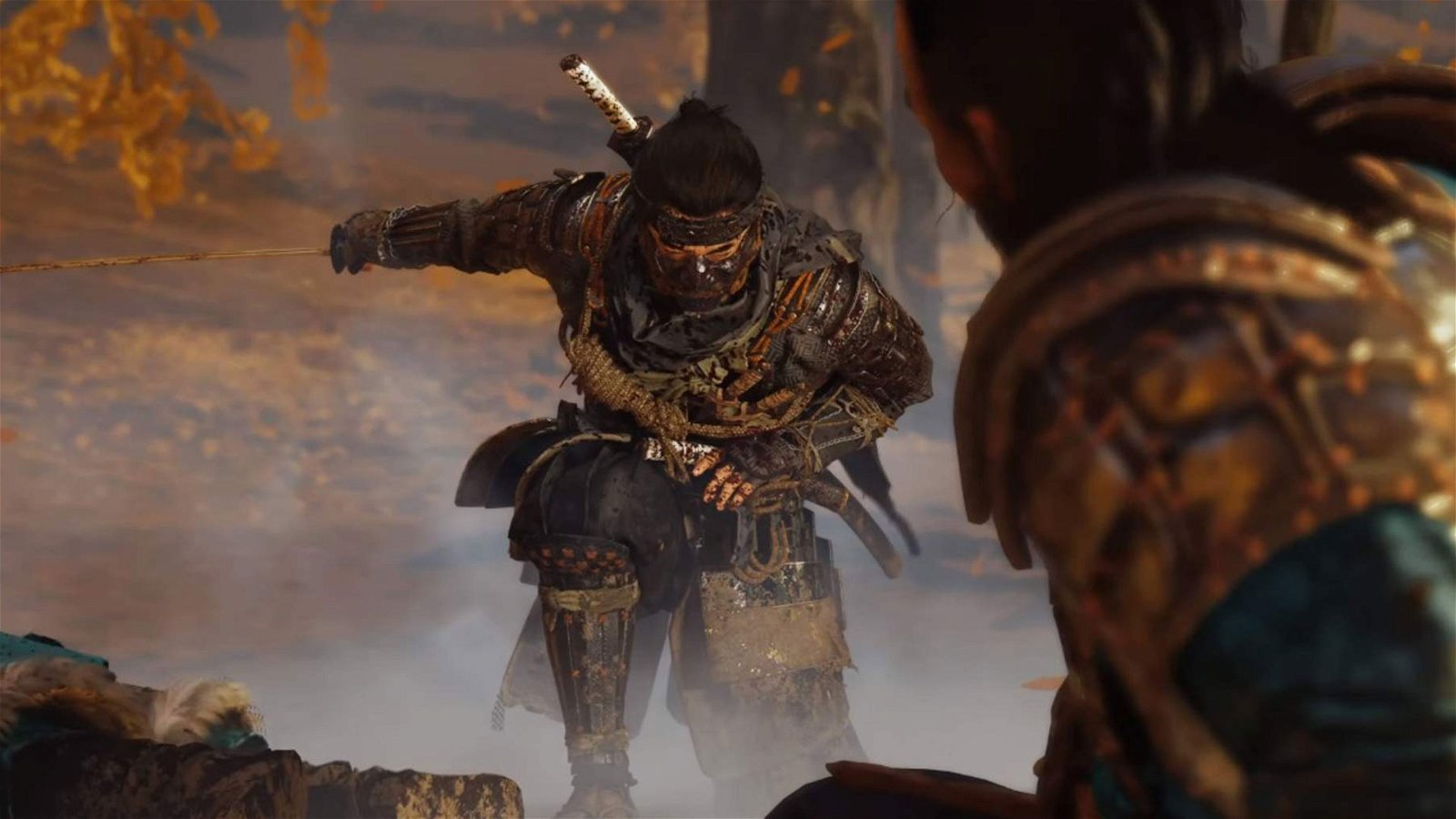Nate Fox, Game Director at the Sucker Punch talks Ghost of Tsushima and how the classic film genre helped shape the core of the gameplay experience.
Classic Samurai films had a unique look about them, and much like the western mythologized the cowboy, these movies lifted the Samurai to new heights. They were unstoppable, ruled by honour and took battle and their code seriously. Ghost of Tsushima, the new title from Sucker Punch, takes these core concepts and translates them into a massive open-world experience.
Transporting players to a fictional story based in feudal Japan, Ghost of Tsushima has you take the reins of Jin, a samurai forced to find a way to strike back at an enemy force that decimated countless of his brothers in arms. With the game just hitting stores, CGMagazine took some time to talk to Nate Fox, Game Director at the studio to dive into how Ghost of Tsushima came to be, and how the classic film genre helped shape the core of the gameplay experience.
CGMagazine: This is a game that is very different from a lot of other games Sucker Punch has done. How did the studio get involved in this game?
Nate Fox: Well, at least for me, this goes back to when working on the Sly Cooper game. At the time I was writing dialogue for the games while being a game designer and I was reading a samurai comic series called Usagi Yojimbo. He was an anthropomorphic rabbit samurai wandering the countryside, and he’d go into town and see what the problem is, and he’d solve these issues with his wits and the edge of his sword. That always seemed to me to be a perfect fit for an open-world game. So we finished with the Infamous franchise, and we’re looking around for a new idea, and this is one that I was very excited about. This is the kind of game that I’d always wanted somebody to make. That is the kind of thing you look for when you’re trying to decide what you’re going to do next. So we started working on an open-world samurai game where you get to wander around and solve problems with the edge of your sword.

CGMagazine: Ghost of Tsushima has a very different look than past Sucker Punch titles, how did the visual style come to be?
Nate Fox: We wanted the game to be mature, in the way that the classic samurai films feel very heavy and mature. A lot of people when you say, “Hey, what is the samurai?” the number one thing they’ll answer with what they saw in the movies is Seven Samurai. So these older samurai films set the standard of expectation for people on how a samurai holds themselves, how they fight, the kind of landscape they find themselves in, and so these films are really mature and we wanted to capture all of it.
CGMagazine: Now, you mentioned looking at samurai films, were there actual, specific movies beyond Seven Samurai that you used as reference?
Nate Fox: Absolutely. Seven Samurai to me shows a lot of the heart of how the samurai protect the people. Another classic is Yojimbo, where a samurai walks into town solves problems, just like the comic Usagi Yojimbo. Another really good touch point for us is the movie 13 Assassin, which is the more modern look at the samurai. I think 13 Assassins does the best job with our touchstones for combat for these three words, mud, blood and steel. We want it to feel gritty and immediate and, that movie in particular, captures that feeling so well.
CGMagazine: Beyond film, did you have a consultant on hand to make sure the world of the game feels lived in, feels realistic, and feels true to the genre.
Nate Fox: So we’re a bunch of developers who live in America and we knew going in that we wanted to transport the player back to feudal Japan, but that we were not equipped to do a fantastic job. So we reached out to experts in many different fields and had them contribute; directing us on how to best represent the era. I’m talking about language, religion, clothing, all of it that we could muster to try and provide that feeling of authenticity that you get when you visit the Tsushima man in our game. It really was nice being a part of Sony because it’s a big organization and one of those arms is Japan Studios. Early on, they actually took us on a tour of Tsushima Island, and some parts of mainland Japan to do research on the game, they even went so far as to do field recordings for us. So the audio in the game felt just right.

CGMagazine: How did that creative process work while using these consultants?
Nate Fox: Generally speaking, we had a goal with the game, we had a story we wanted to tell, we had a world one to build, and we would come up with ideas and then we would get an evaluation on if they were appropriate. So here’s a really good example while recording motion capture for this game, we had a character who was drawing a bow and while we’re recording we had an expert there say, “Oh, no, no, that’s not how you draw a bow. You’re going to draw a long bow. It’s two meters tall. And you go from up, down to draw the arrow back.” And you watch this woman do it and it was easy to see it is to say “Oh, that’s exactly how it’s do,” and so the actors, in that moment, modified their performance and it’s in the game.
CGMagazine: That’s incredible.
Nate Fox: It’s nice to have experts
CGMagazine: How as a studio did you flesh out the story for Ghost of Tsushima?
Nate Fox: Well, we knew we wanted to do a samurai game because it’s a very alluring job. And feudal Japan is extremely interesting, visually, culturally, but we missed the threat at stake. So in doing some research, I noticed that the Mongols had invaded Japan and the first place they made landfall was Tsushima Island, where 80 Samurai road to meet them and they were all slaughtered. Now that’s a real historical fact. Our game is using that as a jumping off point to create a fictional story where one of those samurai is actually survived, and now they’re fighting back against impossible odds, while their culture is embattled.
“Well, it’s a Sucker Punch game, and we pride ourselves in having fast fluid and fun mechanics.”
CGMagazine: Was there ever a worry you might be treading on sensitive ground with historically based events, and if so, how did you kind of navigate that?
Nate Fox: We absolutely did not want to be insensitive to the fact that this was a real event where real people died, and so we would talk to these experts. For instance, one of the things in the early drafts of the story as we had real people from history in that time playing a role in the game and they told us that that would be disrespectful. So we stuck it out of the story altogether. That’s why the story is an absolute work of fiction after the battle and the invasion is over. It’s just an invention on our part. We’re telling the story of how the samurai Jin Sakai has to let go of who he thought he was going to be. He’d been raised inside of the code of the samurai should suffer death before dishonour, and, in order to save the people that he loves on this island, he has to say goodbye to those old ideals and start doing things in an underhanded way, because that’s what the people around him need him to be.

CGMagazine: How much bigger is the scope of this game compared to past Sucker Punch titles?
Nate Fox: Definitely, this game is the most ambitious thing we’ve ever gone after. It’s much, much bigger than any Infamous title, but having a massive open world is only as good as how much content there is to explore and discover inside of that world. So we worked hard, not just to create that main story of transformation, where Jin goes from a samurai to this new kind of warrior, but on that path, if you choose to get off of it, there are all sorts of characters that you meet along the way you can then become invested in their stories. The game is a massive anthology of stories, all of which explore what it’s like to survive in this time of invasion.
CGMagazine: How does it feel to be working on one of the last major titles of the PS4 generation?
Nate Fox: It’s Incredible! You know we’ve been working on this game since we finished Infamous: First Light and it is a very ambitious game that’s very big in scope and we’ve been going year after year trying to get the sword fighting feeling just right, story beats polished up and we’re done. We’re on track we’re going to hit a July 17th ship date and it just took that long to finish this big wartime epic
CGMagazine: How did you narrow down the elements from classic samurai fiction and sort out what would work with Ghost of Tsushima?
Nate Fox: Well, the great raiser statement for what’s in the game and what’s not in the game is, “Is this the kind of thing you’d see in a classic Samurai movie?” In the State of Play video, you probably saw Jin rolled up to the Mongols, and he called them out for a standoff, where nobody is drawing swords. They’re just fighting each other waiting for the other guy to move, and then bam, people fall, swords come out, and it’s over. That’s something that’s very typical to movies of the time and can show the swagger of a samurai that’s in the game because of the genre. That’s how we make these decisions about what stays in and what doesn’t. It’s really just that simple.

CGMagazine: Ghost of Tsushima has a very realistic look, but it also has that kind of classic stylized elements. How did you blend those elements together and how did you end up on this style that we see in the final product?
Nate Fox: Well, I gotta say my hat goes off to the rendering programmers at Sucker Punch, they are fantastic. They work tirelessly, all the time from Infamous: First Light, which had a lot of variables rendering features in it, all the way up to Ghost of Tsushima, but features alone don’t really move the needle. I think you need to have an excellent eye and the person who directed this whole game, my partner Jason Canal, really deserves a lot of credit for not saying let’s do everything, but instead narrowing the focus to strong statements. Some things we knew going in, we’re going to be typical because of the samurai film genre, for instance, like a sea of grass moving in the wind that’s in there, because in these films nature thrashing about and the one warrior not moving, just staring somebody down. He looks like a statue. Now, if the environment wasn’t moving, it wouldn’t be a dynamic frame, but, because it is, this statue warrior looks incredibly strong. That’s why our environment is that reactive. It comes from just a visual convention of these films.
CGMagazine: How were you able to capture that essence of the feeling of power that emanates from classic samurai films like Seven Samurai, Yojimbo, etc?
Nate Fox: So, it really comes down to two things. First, again, talk to experts, people that know how to hold the katana right, which I don’t and they’re out there and we talk to them and the other one is to embrace stillness. Instead of constantly having your sword moving around, have the move happened. Take a beat and then go to the next one, and that’s something that it took a little while for us to get our heads around: that it was alright for Jin to attack the Mongol and then not immediately turn around to face the next one, but it’s alright for him to stay there and maybe tilt his head a little bit and that’s enough, you know that he’s aware that he doesn’t care because he’s in command.

CGMagazine: That sense of power and sense of presence is so important to these films, but how did you, as people working on a game, ensure that those didn’t feel unresponsive for a player not used to these films?
Nate Fox: Well, it’s a Sucker Punch game, and we pride ourselves in having fast fluid and fun mechanics. And if the player is working the sticks and hitting buttons, Jin will react. But if you don’t jam on six buttons he will settle; he’ll have that moment of kind of scanning the battlefield elegantly with a minimal amount of motion, and the game rewards you for slowing down for paying attention to cues, not just in the environment, but in how enemies are approaching you, and what kind of assault they’re going to bring.
CGMagazine: Could you expand on that quickly?
Nate Fox: So in the State of Play demo, we showed Jin carrying an enemy who came at him and if you time that right, you can counter-attack in a really brutal fashion, but it requires you to have some patience and to really scrutinize what the enemy is doing with his weapon. It’s not easy at all. Our player in the State of Play is really expert so it looks easy. I can tell you right now it is extremely challenging and you will die a lot.




